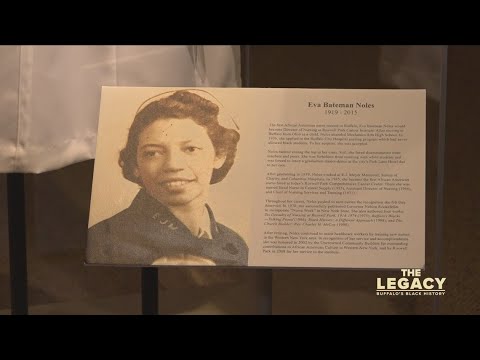But first, let’s go back to where it all began. Pete Gallivan introduces us to the pioneers of Buffalo’s Black history. America. It is to thee. Thou boasted land of liberty. It is to thee. I raise my song. Thou land of blood and crime and wrong.
Those are the words of a Buffalo Barber named James Monroe Whitfield who in 1853 became Buffalo’s first published black author. His poem, America took the Nation to task over the issue of slavery. Just a few years before that another Queen City Barber was bringing his anti slavery message to the stage.
In 1845 David Paul Brown’s production took the stage at the Old Eagle Street Theater. Making Brown our first black playwright. Yes. A number of African Americans wrote their own history. Breaking Buffalo’s color barrier. Well, I think it takes kind of a pioneering spirit to um you know,
To go out and not conquer necessarily but to overcome barriers and obstacles. But as historian Doctor Barbara Neg Gold points out that while some were making history, others were writing her story, one such groundbreaking woman was Eva Bateman Knowles, who in 1936 became the first African American woman
To be trained in Buffalo as a nurse. In fact, a number of years ago in an interview, MS Knowles told to on your side how it all came to be, I applied on a dare and the hospital was Buffalo City Hospital, which today is EC MC. Now,
She knew at that point in time that black women’s career choices were very limited and that very often in looking at her parents and her mother, in particular, that black women had to look forward to jobs in housekeeping, you know, cooking and she didn’t want those kinds of jobs.
She wanted to have something else different. She knew being a very bright woman that there are other things that she could do. And so she decided she’d take the dare and she’d go and apply. And then she did, she got in and boy, did she make the most of that opportunity?
She became a registered nurse, then a nursing educator and ultimately director of nursing at Buffalo’s world renowned Roswell Park. Did she look at herself as a pioneer? I think she probably did. And a reason I say that is that she kept every single piece of, um, correspondence
Of certificates that she earned from high school. She was really involved in the Red Cross and she was involved all her life, but she kept all of those things. So when, um, she did finally retire, you know, she lived until she was 96.
She donated all of those materials to the University of Buffalo Archives, which has them now. So she had a sense of her own history and what she wanted to leave to make sure that people didn’t forget her. She also became an author, celebrating other notable Black Buffalos from
Aretha Franklin who lived here until she was eight and even sang in the choir at Friendship Baptist Church to Jazz, Great Grover Washington Jr. Her main point in documenting these greats in her book, Buffalo’s Blacks, Talking Proud is to accentuate how she too lived her life. Look for other jobs to do
And if you qualify for something, do it, the words that echo through the actions of even Knowles and so many others that fought so hard for equal opportunities.
source
